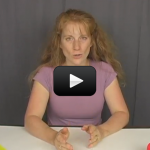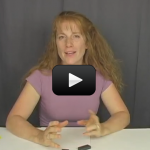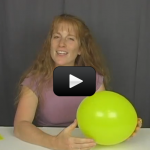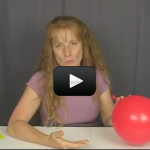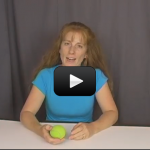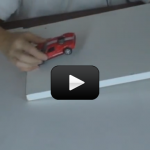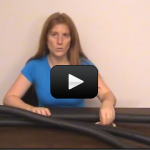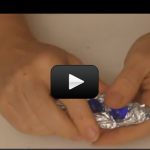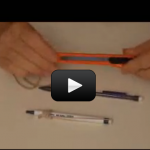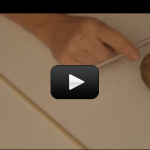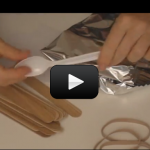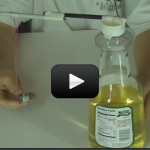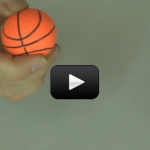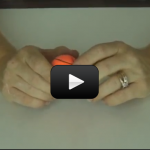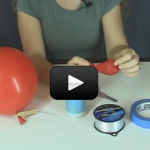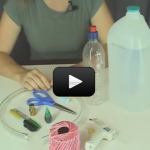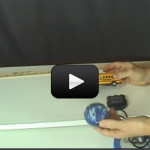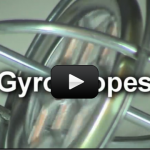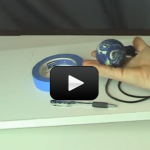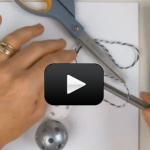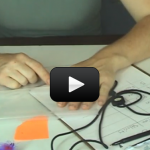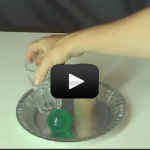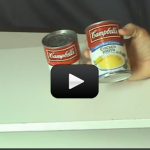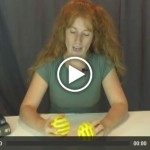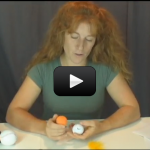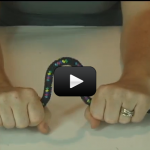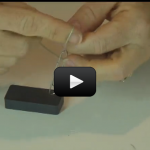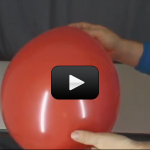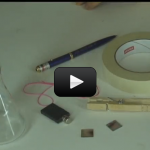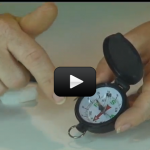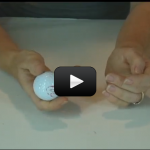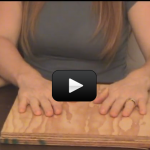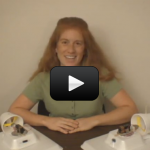Maxwell’s Fourth Equation
Maxwell’s Fourth Equation: Moving electrical charges (fields) generate magnetic fields AND changing magnetic fields generate electrical fields (electricity). We're going to do a couple of experiments to illustrate both of these concepts. Magnetic fields are created by electrons moving in the same direction. A magnetic field must come from a north pole of a magnet … Continue reading "Maxwell’s Fourth Equation" |
Maxwell’s Third Equation
Maxwell’s Third Equation: Invisible magnetic fields exert forces on magnets AND invisible electrical fields exert forces on objects. A field is an area around a electrical, magnetic or gravitational source that will create a force on another electrical, magnetic or gravitational source that comes within the reach of the field. In fields, the closer something … Continue reading "Maxwell’s Third Equation" |
Maxwell’s Second Equation
Maxwell’s Second Equation: All magnets have two poles. Magnets are called dipolar which means they have two poles. The two poles of a magnet are called north and south poles. The magnetic field comes from a north pole and goes to a south pole. Opposite poles will attract one another. Like poles will repel one … Continue reading "Maxwell’s Second Equation" |
Maxwell’s First Equation
Maxwell’s First Equation: Like charges repel; opposites attract. The proton has a positive charge, the neutron has no charge (neutron, neutral get it?) and the electron has a negative charge. These charges repel and attract one another kind of like magnets repel or attract. Like charges repel (push away) one another and unlike charges attract … Continue reading "Maxwell’s First Equation" |
Newton’s Third Law of Motion
Third Law of Motion: For every action, there is an equal and opposite reaction. Force is a push or a pull, like pulling a wagon or pushing a car. Gravity is a force that attracts things to one another. Weight is a measure of how much gravity is pulling on an object. Gravity accelerates all … Continue reading "Newton’s Third Law of Motion" |
Newton’s Second Law of Motion
Second Law of Motion: Momentum is conserved. Momentum can be defined as mass in motion. Something must be moving to have momentum. Momentum is how hard it is to get something to stop or to change directions. A moving train has a whole lot of momentum. A moving ping pong ball does not. You can … Continue reading "Newton’s Second Law of Motion" |
Newton’s First Law of Motion
First Law of Motion: Objects in motion tend to stay in motion unless acted upon by an external force. Force is a push or a pull, like pulling a wagon or pushing a car. Gravity is a force that attracts things to one another. Gravity accelerates all things equally. Which means all things speed up … Continue reading "Newton’s First Law of Motion" |
Go Go GO!!
This is a nit-picky experiment that focuses on the energy transfer of rolling cars. You'll be placing objects and moving them about to gather information about the potential and kinetic energy. |
Roller Coasters
We're going to build monster roller coasters in your house using just a couple of simple materials. You might have heard how energy cannot be created or destroyed |
Bobsleds
Bobsleds use the low-friction surface of ice to coast downhill at ridiculous speeds. You start at the top of a high hill (with loads of potential energy) then slide down a icy hill til you transform all that potential energy into kinetic energy. |
P-Shooters
This is a simple, fun, and sneaky way of throwing tiny objects. It's from one of our spy-kit projects. Just remember, keep it under-cover. Here's what you need: |
Potato Cannon
This experiment is for kids Grades 9-12.There are several different ways of throwing objects. This is the only potato cannon we've found that does NOT use explosives, so you can be assured your kid will still have their face attached at the end of the day. |
Catapults
When you drop a ball, it falls 16 feet the first second you release it. If you throw the ball horizontally, it will also fall 16 feet in the first second, even though it is moving horizontally… it moves both away from you and down toward the ground. |
Pendulums
This is a very simple yet powerful demonstration that shows how potential energy and kinetic energy transfer from one to the other and back again, over and over. Once you wrap your head around this concept, you'll be well on your way to designing world-class roller coasters. |
Elastic Potential Energy
There are many different kinds of potential energy. We've already worked with gravitational potential energy, so let's take a look at elastic potential energy. |
Ball Bounce
When you toss down a ball, gravity pulls on the ball as it falls (creating kinetic energy) until it smacks the pavement, converting it back to potential energy as it bounces up again. This cycles between kinetic and potential energy as long as the ball continues to bounce.
|
Homemade Pulleys
These homemade pulleys work great as long as they glide freely over the coat hanger wire (meaning that if you give them a spin, they keep spinning for a few more seconds). You can adjust the amount of friction in the pulley by adjusting the where the metal wire bends after it emerges from the pulley. |
Balloon Racers
We're going to experiment with Newton's Third law by blowing up balloons and letting them rocket, race, and zoom all over the place. When you first blow up a balloon, you're pressurizing the inside of the balloon by adding more air (from your lungs) into the balloon. |
G-Force
A common misconception in science is that centrifugal and centripetal force (or acceleration) are the same thing. These two terms constantly throw students into frenzy, mostly because there is no clear definition in most textbooks. |
Downhill Race
Newton’s Second Law is one of the toughest of the laws to understand but it is very powerful. In its mathematical form, it is so simple, it’s elegant. |
Gyro Wheel
Gyroscopes defy human intuition, common sense, and even appear to defy gravity. You'll find them in aircraft navigation instruments, games of Ultimate Frisbee, fast bicycles, street motorcycles |
Driveway Races
This experiment is one of my favorites in this acceleration series, because it clearly shows you what acceleration looks like.
The materials you need is are: |
Circular Motion
This experiment is for advanced students. Circular motion is a little different from straight-line motion in a few different ways. Objects that move in circles are roller coasters in a loop, satellites in orbit, DVDs spinning in a player, kids on a merry go round, solar systems rotating in the galaxy, making a left turn … Continue reading "Circular Motion" |
Look Out Below!
If you jump out of an airplane, how fast would you fall? What's the greatest speed you would reach? Let's practice figuring it out without jumping out of a plane. |
TaaDaaaaa!!!
Ever wonder how magicians work their magic? This experiment is worthy of the stage with a little bit of practice on your end. |
Chicken and the Clam
Next time you watch a drag race, notice the wheels. Are they solid metal discs, or do they have holes drilled through the rims? |
Forever Falling
If I pitch a ball toward the sunset at the exact same instant that I drop another one from my other hand, which one reaches the ground first? For this experiment, you need |
A Weighty Issue
This lesson may give you a sinking sensation but don’t worry about it. It’s only because we’re talking about gravity. You can’t go anywhere without gravity. Even though we deal with gravity on a constant basis |
Net Forces
It is very rare, especially on Earth, to have an object that is experiencing force from only one direction. A bicycle rider has the force of air friction pushing against him. He has to fight against the friction between the gears and the wheels. |
Force-full Cereal
Did you know that your cereal may be magnetic? Depending on the brand of cereal you enjoy in the morning, you'll be able to see the magnetic effects right in your bowl. You don't have to eat this experiment when you're done |
Flying Paper Clip
Have you ever been close to something that smells bad? Have you noticed that the farther you get from that something, the less it smells, and the closer you get, the more it smells? Well forces sort of work in the same way. |
Detecting the Electric Field
You are actually fairly familiar with electric fields too, but you may not know it. Have you ever rubbed your feet against the floor and then shocked your brother or sister? |
The Electromagnetic Field
The electromagnetic field is a bit strange. It is caused by either a magnetic field or an electric field moving. If a magnetic field moves, it creates an electric field. If an electric field moves, it creates a magnetic field. |
Detecting the Magnetic Field
Remember, there are four different kinds of forces: strong nuclear force,
electromagnetism, weak nuclear force, and gravity. There are also four basic force fields that you come into contact with all the time. |
Detecting the Gravitational Field
Ok, sort of a silly experiment I admit. But here's what we're going for - there is an invisible force acting on you and the ball. As you will see in later lessons, things don’t change the way they are moving unless a force acts on them. When you jump, the force that we call gravity pulled you back to Earth. |
Bearings
Stand on a cookie sheet or cutting board which is placed on the floor (find a smooth floor with no carpet). Ask someone to gently push you across the floor. Notice how much friction they feel as they try to push you. |
Hovercraft
Hovercraft transport people and their stuff across ice, grass, swamp, water, and land. Also known as the Air Cushioned Vehicle (ACV), these machines use air to greatly reduce the sliding friction between the bottom of the vehicle (the skirt) and the ground. |

